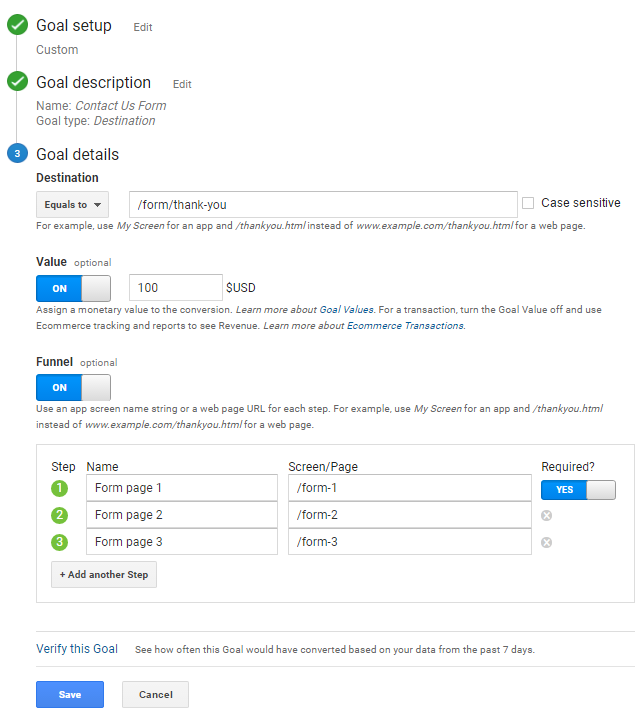Understanding What Data Is Google Analytics Goals Unable to Track
Understanding What Data Is Google Analytics Goals Unable to Track
Blog Article
Discover the Limitations of Google Analytics Goals: Unveiling the Data Kind That Remain Untrackable
As businesses progressively depend on data-driven decision-making, comprehending the constraints of devices like Google Analytics becomes extremely important. While Google Analytics Goals offer useful understandings into customer communications, there exist information types that thwart monitoring, positioning difficulties to a detailed understanding of customer actions.
Insufficient Customer Trip Tracking
Insufficient individual trip tracking within Google Analytics can hinder the ability to precisely examine customer habits. When the individual journey is not completely tracked, there are gaps in the information that prevent a detailed understanding of exactly how individuals interact with a site. This lack of insight can result in missed opportunities for optimization and renovations to the user experience.
One common issue with incomplete individual trip tracking is the inability to see the complete course that customers take previously completing an objective or leaving the website. Without this info, it is challenging to recognize where customers might be experiencing challenges or friction factors that avoid them from transforming. Furthermore, incomplete monitoring can cover the impact of particular advertising and marketing initiatives or website adjustments on customer habits.
To resolve this restriction, it is essential to set up proper tracking mechanisms within Google Analytics to catch the entire customer journey. This might involve establishing event tracking, objective funnels, or using devices like Google Tag Supervisor to ensure that no vital interactions go unrecorded. By obtaining a comprehensive sight of the individual trip, internet site proprietors can make more informed decisions to enhance individual interaction and drive conversions.
Attribution Difficulties
Navigating with acknowledgment difficulties in Google Analytics requires a thorough understanding of how different touchpoints add to the general conversion procedure. Acknowledgment difficulties arise from the intricacy of modern-day consumer trips, where users engage with numerous networks before transforming.
One usual attribution challenge is the problem in connecting conversions to the proper resource, especially in instances where individuals interact with several channels prior to converting. Furthermore, cross-device tracking presents an additional acknowledgment difficulty, as users usually change in between gadgets throughout their journey, making it challenging to track their communications flawlessly.
Offline Conversions
Offered the obstacles connected with attributing conversions precisely in online channels, the dimension of offline conversions presents a substantial chance for online marketers looking for a much more thorough understanding of their consumers' journey. Offline conversions refer to activities that clients take in the real world, such as making acquisitions in brick-and-mortar shops or over the phone, going to occasions, or involving with printed materials - what data is google analytics goals unable to track. These conversions are important for organizations that operate both online and offline, as they offer beneficial insights into the efficiency of marketing campaigns across numerous touchpoints
Tracking offline conversions traditionally positioned a substantial obstacle for marketing professionals, as it was testing to connect these actions back to certain on-line interactions properly. wikipedia reference With improvements in innovation, such as the assimilation of CRM systems, special identifiers, and promo code codes, organizations can currently link the void in between online and offline information to get a more alternative sight of consumer behavior. By properly determining offline conversions, marketing experts can maximize their methods, designate resources more efficiently, and inevitably boost the general consumer experience.
Cross-Device Monitoring
Cross-device tracking plays a crucial duty in understanding the interconnected nature of customers' digital communications across numerous gadgets. In today's omnichannel globe, where individuals seamlessly switch in between desktop computers, tablet computers, and mobile phones, tracking their actions across these gadgets is crucial for online marketers to get a detailed sight of their consumer trip.

Additionally, personal privacy worries and regulations such as GDPR and CCPA have further complicated cross-device monitoring. With customers demanding more control over their information and increased limitations on monitoring technologies, marketing experts should discover ingenious and privacy-compliant methods to connect individual communications across devices.
Dynamic Web Content Involvement
Comprehending user engagement with dynamic content is pivotal in optimizing electronic advertising techniques for boosted audience interaction. Dynamic content describes website components that alter based on customer actions, preferences, or various other aspects, supplying a personalized experience. Tracking customer interactions with vibrant material positions obstacles for traditional analytics devices like Google Analytics.
While Google Analytics can track standard interactions like clicks and web page views, it might have a hard time to capture more nuanced involvements within dynamic web content. what data is google analytics goals unable to track. Metrics such as time spent on particular vibrant components, hover activities, or interactions within pop-ups are usually not quickly measurable making use of common tracking approaches. This limitation impedes marketers' capability to totally understand exactly how customers are involving with dynamic material and customize their strategies accordingly

Verdict
Finally, Google Analytics objectives have constraints in tracking insufficient user trips, attributing conversions precisely, recording offline conversions, tracking cross-device communications, and gauging vibrant web content engagement. These constraints highlight the value of discovering added monitoring methods and tools to acquire a much more detailed understanding of user actions and conversions past what Google Analytics can offer.
While Google Analytics Goals offer important understandings right into individual interactions, there exist data kinds that thwart monitoring, posturing obstacles to an extensive understanding of individual habits.Incomplete individual journey monitoring within Google Analytics can prevent the capability to accurately examine individual behavior. When the user journey is not completely tracked, there are click reference spaces in the information that protect against a comprehensive understanding of just how individuals connect with a website.One usual concern with incomplete individual journey monitoring is the failure to see the full path that customers take previously completing a goal or leaving the site. By gaining a comprehensive view of the user trip, site proprietors can make even more enlightened choices to improve customer engagement and drive conversions.
Report this page